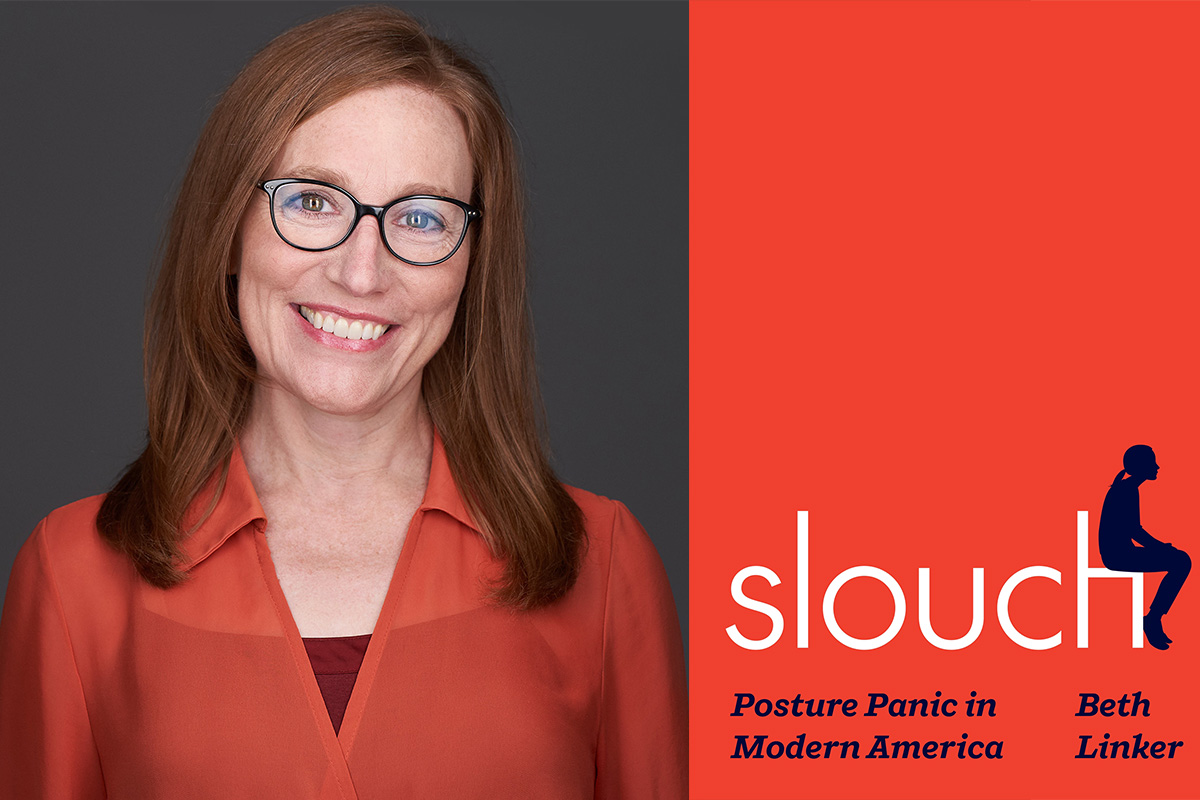The Spine, Politicized
A new book from History and Sociology of Science Professor Beth Linker investigates how and why a panic around posture emerged in America in the 20th century.
In the young adult novel Deenie by Judy Blume, a seventh grader who longs to be “normal” gets diagnosed with scoliosis, leaving her feeling different, a disappointment to a mother who has ambitions for her to become a fashion model. For Beth Linker, Samuel H. Preston Endowed Term Professor in the Department of History and Sociology of Science, the book served as a childhood cautionary tale about what it might mean to not have a straight spine or what could happen if she failed to listen to her own mother’s orders not to slouch.
“The book has a happy ending, but it sent this message that if you have bad posture or scoliosis, you’ll have to wear a heavy chin-to-waist brace for 23 hours a day, so that instilled a lot of fear in me. It had me thinking about posture from a young age,” explains Linker, who is a historian of medicine and disability, as well as a former physical therapist.

Linker’s new book, Slouch: Posture Panic in Modern America, delves into the emergence of our nation’s preoccupation with posture. The book, already reviewed in The New Yorker and The Washington Post and highlighted in The New York Times, investigates the historical, cultural, and political implications of the 20th-century emergence of an obsession with standing up straight. At that time, “good” posture became a proxy for health—even used in the military to assess fitness to serve, as a wellness test for immigrants seeking entrance, and by many colleges and universities, which required students to take nude “posture” photos as part of physical exams before matriculating.
This preoccupation with straight backs dates to Darwin, according to Linker. Slouch recounts this history beginning in the late 19th century, a time when posture became “scientized and medicalized” in the wake of Darwin’s theory of natural selection and scientific communities’ increasing acceptance of evolution.
It’s a historical moment essential to the foundation of modern posture panic, Linker says. “Darwin posited not only his theory of natural selection, but also that the original human descended from simians and what set off that chain of events was standing up straight. He posited that upright posture actually preceded intellect and language acquisition.”
As physicians and scientists accepted Darwin’s theory—that upright posture came before intelligence and language ability and was the first trait to separate humans from beasts—they started to see a disconnect in the society around them. “If upright posture is necessary to human superiority and the progression of civilization, yet a bunch of people are slumped over, then we have a problem. It creates this kind of fear that permeates throughout the century,” Linker says.
If upright posture is necessary to human superiority and the progression of civilization, yet a bunch of people are slumped over, then we have a problem. It creates this kind of fear that permeates throughout the century.
The book, she adds, is meant to “poke a hole” in that panic, in the idea that posture is important and that something specific constitutes “good” posture. It looks at the transition from posture as scientific concept to one of commercial opportunities that played out as the widespread marketing and sale of products like medical girdles, back braces, orthopedic shoes, and posture-focused fitness routines.
It also touches on notions from not all that long ago that would today be unfathomable, like the nude photos of college coeds from past posture tests. As Linker notes, the Smithsonian Archives held thousands of such images; some, especially those of well-known public figures like George H. W. Bush and Diane Sawyer, were destroyed in 1995, but many others still exist.
As a disability scholar, Linker also felt it important to look at posture through the lens of disability. In this section, she cites a 1917 public health report from Harvard stating that 80 percent of Americans had bad posture—a statistic oft repeated at the time. “Poor posture was being treated as a disability, as well as a potential condition that could create future permanent ills and disabilities not just for the individual but also for the nation,” Linker says. “This establishment of norms interests me, like, how is a normal body defined? Because when you say, ‘Don’t slouch,’ not all bodies can adhere to that command.”
One main message Linker hopes readers come away with is that “science, medicine, and health beliefs all have politics and culture built into them.” And though paying attention to posture may confer some benefits, “more precise research and actual scientific evidence” are needed, she says. “One person’s slouch might be another person’s uprightness.”


